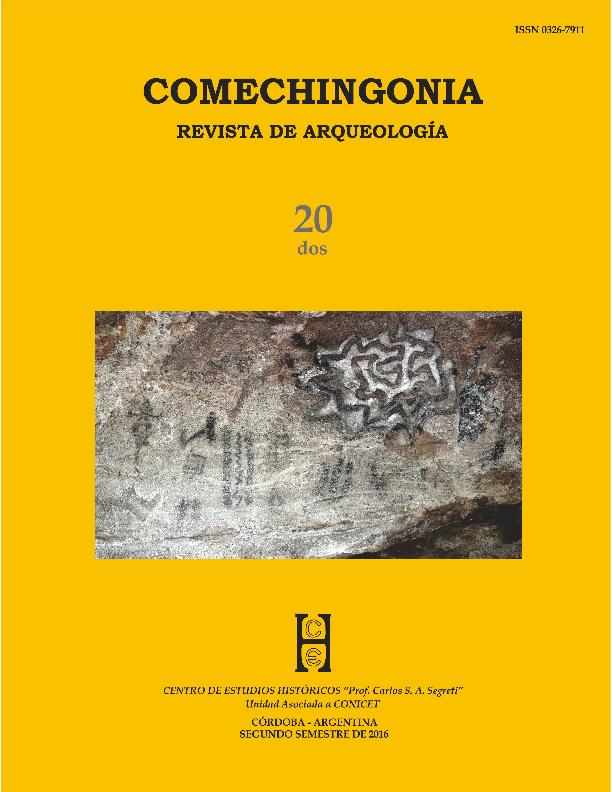Artículo
La costa del golfo San Matías (provincia de Río Negro, Argentina) presenta ocupaciones humanas desde los 6000 hasta los 450 años AP. En particular, los fechados más antiguos de la Costa Oeste del golfo se sitúan en torno a los 3000 años AP. A partir de estos momentos, los grupos cazadores-recolectores que habitaron el área explotaron diversas materias primas líticas para la manufactura de artefactos con distintos fines. En este trabajo se presentan las características de los conjuntos líticos recuperados en el área de estudio a partir del análisis tecno-morfológico y de las materias primas, y se determina la intensidad de reducción para los diferentes tipos de rocas utilizados. Para establecer si el uso de las rocas cambió a lo largo del tiempo, se estudió su uso en dos bloques cronológicos definidos para el área. Los resultados indican que en esta porción de la costa rionegrina se utilizó una gran variabilidad de rocas, principalmente de origen local, y que materias primas particulares, como la obsidiana, fueron transportadas desde fuentes distantes. Las rocas más utilizadas habrían sido la calcedonia, el sílex y las vulcanitas ácidas, sumadas al jaspe en el bloque temprano y al chert en el tardío. The archaeological occupation of the San Matías Gulf coast (Río Negro province, Argentina) began at 6000 to 450 years BP. In particular, the oldest occupations in the west coast of the gulf are dated around 3000 years BP. From this moment on, the hunter-gatherers who inhabited the area exploited several types of lithic raw materials, in order to manufacture artifacts for different purposes. In this paper we present the techno-morphological characteristics of the lithic assemblages recovered in the study area, the lithic raw material analysis of the sample and the results of the reduction intensity for different types of rocks. To establish if the rocks use changed over time, we split the artifact sample into two chronological blocks defined for the area. The results indicate that a large variability of rocks, mainly of local origin, was used in this portion of the Rio Negro coast, and that some particular raw materials, like obsidian, were transported from distant sources. The rocks that would have been more used were chalcedony, flint and acid volcanics rocks, along with jasper in the earlier moments of the occupation, and chert in the later ones.
Explotación de materias primas líticas y ocupación del espacio a lo largo del Holoceno medio y tardío en la costa oeste del golfo San Matías (Río Negro, Argentina)
Título:
Exploitation of lithic raw materials and occupation of space along the middle and late holocene in the west coast of San Matías gulf (Río Negro, Argentina).
Fecha de publicación:
12/2016
Editorial:
Centro de Estudios Históricos Prof. Carlos S. A. Segreti. Unidad Asociada al CONICET.
Revista:
Comechingonia
ISSN:
0326-7911
e-ISSN:
1851-0027
Idioma:
Español
Tipo de recurso:
Artículo publicado
Clasificación temática:
Resumen
Palabras clave:
Golfo San Matias
,
Intensidad de Reduccion
,
Materias Primas Liticas
,
Holoceno
Archivos asociados
Licencia
Identificadores
Colecciones
Articulos(IMHICIHU)
Articulos de INST.MULTIDISCIP.DE HISTORIA Y CS.HUMANAS
Articulos de INST.MULTIDISCIP.DE HISTORIA Y CS.HUMANAS
Citación
Alberti, Jimena; Explotación de materias primas líticas y ocupación del espacio a lo largo del Holoceno medio y tardío en la costa oeste del golfo San Matías (Río Negro, Argentina); Centro de Estudios Históricos Prof. Carlos S. A. Segreti. Unidad Asociada al CONICET.; Comechingonia; 20; 2; 12-2016; 243-264
Compartir




